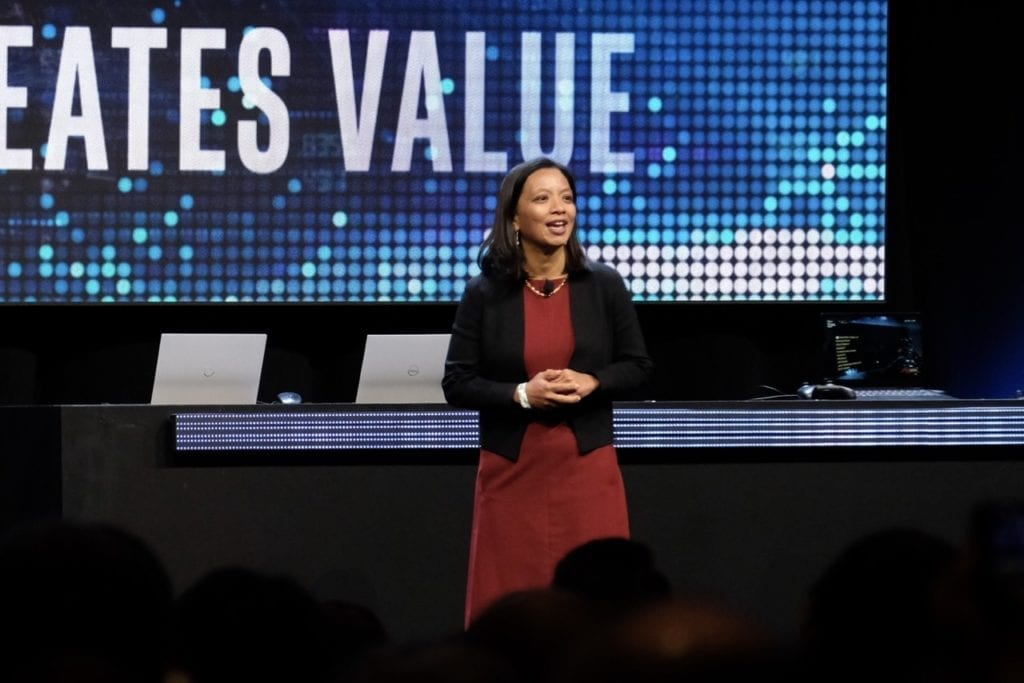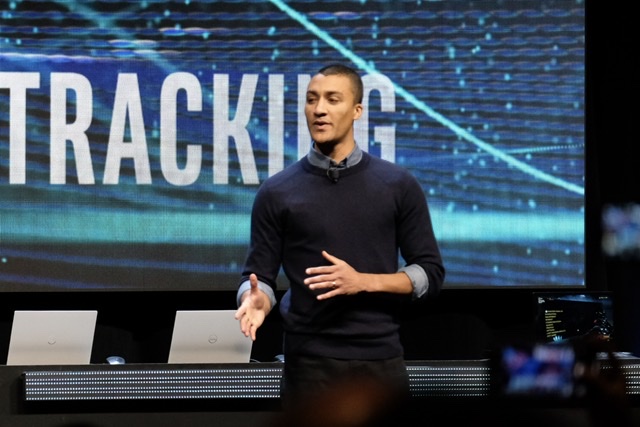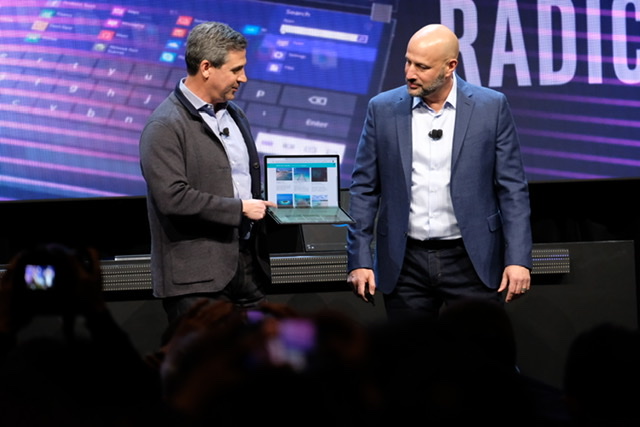Chipmaker Intel’s CES 2020 media event featured a solid balance of strategic partnership talk, news on new and upcoming consumer products, and a few quick teases of fancy future tech.
The company’s partnership talks included a visit from Netflix Director of Encoding Technologies Anne Aaron. Onstage, she discussed last year’s agreement between the two companies to leverage a new video codec to allow for more efficient video compression. They pointed out that as streaming video’s popularity continues to climb, delivering that video as smoothly and efficiently as possible becomes even more important.

Intel also brought out Olympian Ashton Eaton to discuss his role in helping the company develop its 3D Athlete Tracking (3DAT) tech. The technique uses multiple cameras to capture athletes in motion and the resulting biomechanical data can be overlaid on top of the video footage to offer TV viewers (or athletes in training) more insight. Intel expects to show off the feature at the Tokyo 2020 Olympic Games.

Speaking of fancy sports viewing tech, Intel also demonstrated advancements in its volumetric video technology, which uses an array of cameras to track players on the field and create 3D data. You might have seen earlier generations of the tech during sports broadcasts, where one camera view of the action seamlessly transitions to a different perspective as if a physical camera was being moved from one place to another. Intel says it’s still refining the technique to be both fast to produce, and high-quality. The company envisions broadcasters and even fans using the tech to view plays from virtually any angle.
“With volumetric video, we can create infinite perspectives,” Intel’s James Carwana said.

Like most companies here at CES, Intel also spent a good chunk of time discussing the role of AI in improving performance and making previously difficult computing tasks easier. To that end, Adobe’s Jason Levine led a high-energy demo of the company’s flagship Photoshop editor easily removing the background around a complicated subject and properly outlining an object with just a few clicks.
Of course, Intel is best known for powering a lot of desktop and laptop computers, so the company ran through a couple new options from laptop makers, as well as more advanced devices, including a 17-inch foldable PC that’s part of the company’s “Horseshoe Glove” foldable device initiative. In an onstage demo, a prototype was shown in a number of fancy use cases, like the standard laptop “clamshell” position, where the lower half of the screen emulates a keyboard. There was also a partially folded option, like a traditional book, and a fully open position for a full, 17-inch screen.

Overall, Intel showcased a number of practical laptop models for consumers, but seemed content just to tease more exotic wares like a discrete graphics card and the aforementioned foldable PC concept. Will we see a closer-to-production version next year? I guess we’ll have to wait and see.
